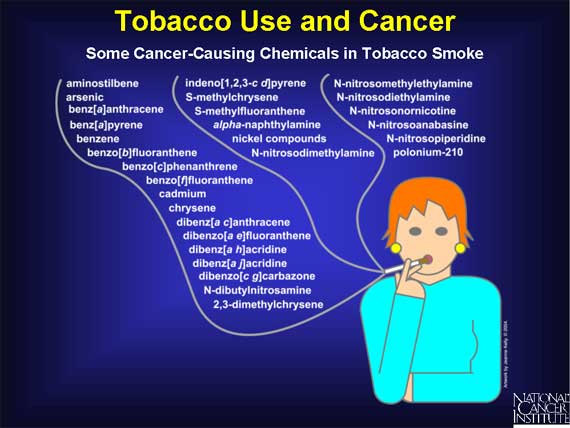|
Among the various factors that can cause cancer, tobacco smoking is the greatest public health hazard. Cigarette smoke contains more than two dozen different chemicals capable of causing cancer. Cigarette smoking is the main cause of lung cancer and contributes to many other kinds of cancer as well, including cancer of the mouth, larynx, esophagus, stomach, pancreas, kidney, and bladder. Current estimates suggest that smoking cigarettes is responsible for at least one out of every three cancer deaths, making it the largest single cause of death from cancer. Other forms of tobacco use also can cause cancer. For example, cigars, pipe smoke, and smokeless tobacco can cause cancers of the mouth.

< Previous | Index | Next Slide > |